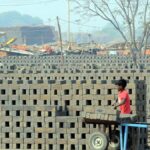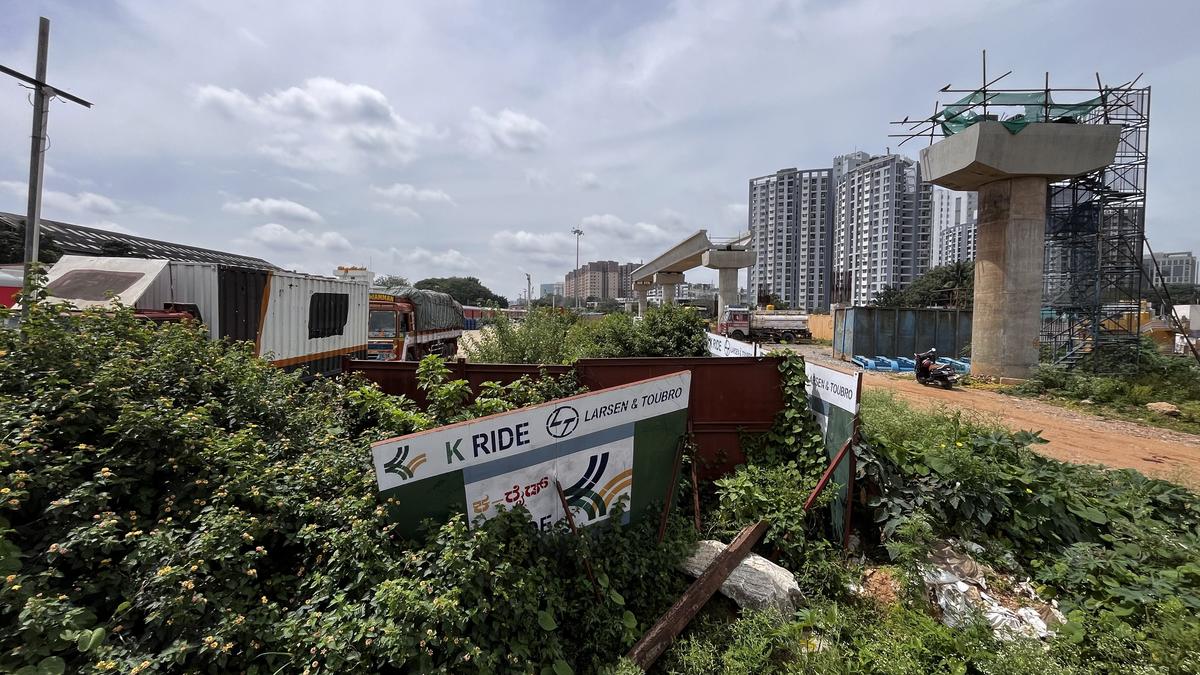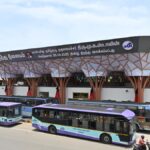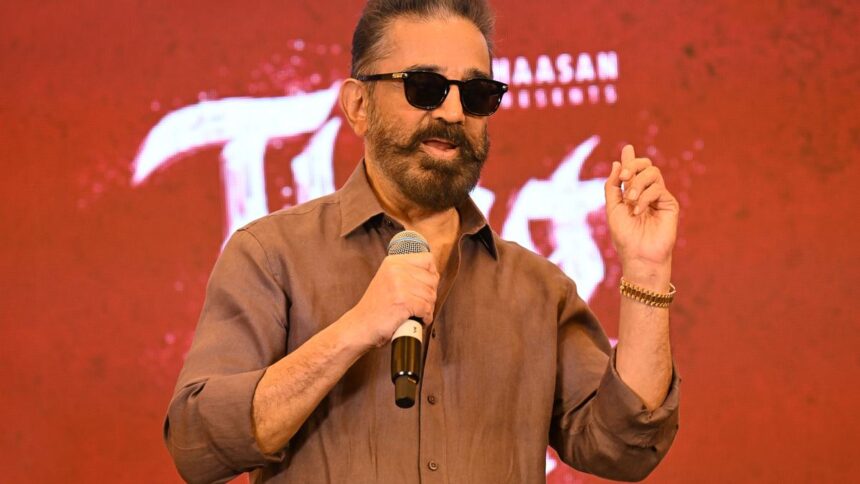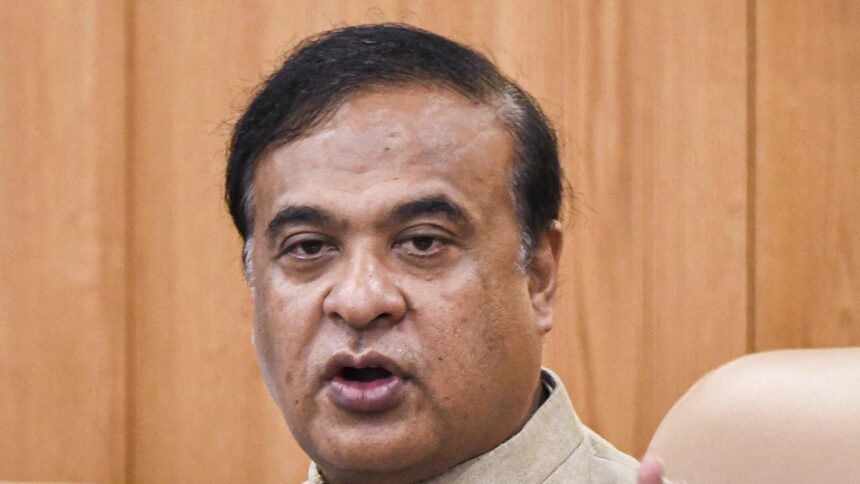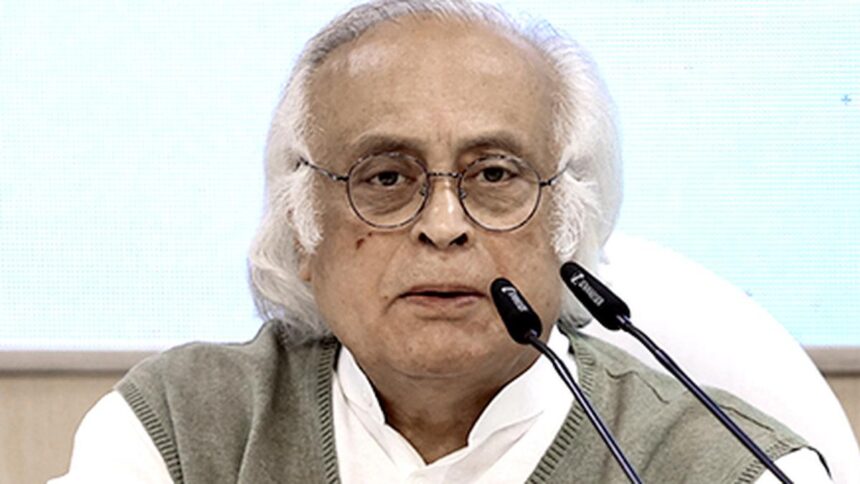:
In the puzzle to solve Bengaluru’s traffic nightmare, the long-delayed Bengaluru Suburban Railway Project (BSRP) was billed as the third pillar of public transport after Bangalore Metropolitan Transport Corporation (BMTC) and Namma Metro.
The project was sanctioned in October 2020 after decades of deliberation and was designed to carry nearly 20 lakh commuters every day across Bengaluru and its outskirts. It envisaged modern nine-coach air-conditioned trains running at high frequencies of five to 12 minutes along four corridors stretching 148 kilometres and covering 58 stations.
The sanctioned cost of ₹15,767 crore was seen as an investment in not only mobility, but also economic efficiency and environmental sustainability. Corridor One, running between Majestic and Kempegowda International Airport, was given priority and was originally scheduled to be completed by October 2023, well ahead of the full project deadline of October 2026.
3 years on, little progress
When Prime Minister Narendra Modi laid the foundation stone in June 2022, he assured citizens that the 148-km network would be delivered within 40 months, ending a 40-year wait. That announcement had generated a wave of optimism across Bengaluru, where traffic congestion has long been a daily torment. Yet, more than three years after the sanction, the reality is starkly different. Progress on the ground has been very slow.
The project suffered another major setback in August 2025, when L&T, the contractor for Corridor Two from Chikkabanavara to Bennigenahalli and Corridor Four from Heelalige to Rajankunte, unilaterally terminated its contracts. The move caught many by surprise and drew sharp criticism from the Karnataka Rail Infrastructure Development Enterprises (K-RIDE), the implementing agency. K-RIDE stated that the contracts were valid until September and October, 2026 respectively and did not permit unilateral withdrawal.
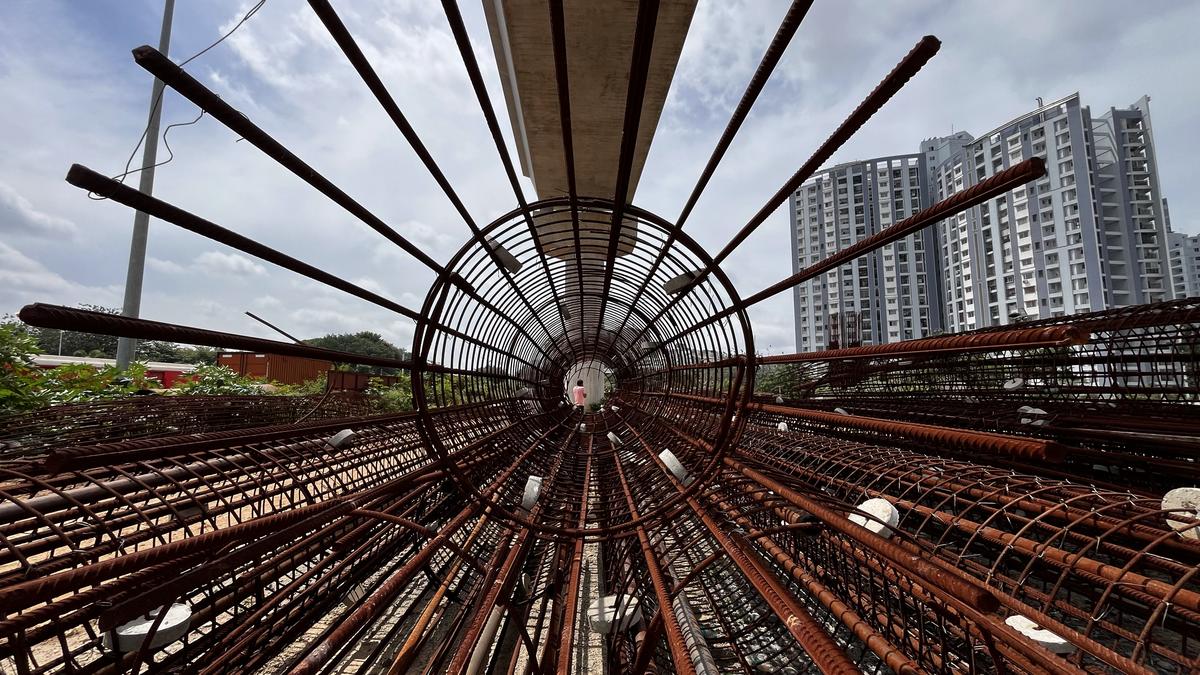
The project suffered another major setback in August 2025, when L&T, the contractor for Corridor Two from Chikkabanavara to Bennigenahalli and Corridor Four from Heelalige to Rajankunte, unilaterally terminated its contracts
| Photo Credit:
SUDHAKARA JAIN
The K-RIDE accused L&T of violating agreement conditions and pointed out that the company had made unreasonable demands, such as mid-project price revisions and a shift from the agreed Engineering, Procurement, and Construction (EPC) model to an itemised Bill of Quantities (BOQ) structure. These, according to K-RIDE, were not permitted under the signed agreement.
Officials said that the majority of land had already been handed over. They claimed that 84% of the land required for Corridor Two and 17 km along Corridor Four were made available to L&T, yet execution lagged far behind schedule. The agency alleged that the company failed to mobilise adequate resources, frequently changed project managers, and delayed design approvals.
Tragedy not in design, but in execution
For citizen activists who have championed the cause of suburban rail for years, the latest setback is deeply disappointing. Rajkumar Dugar, founder of Citizens for Citizens (C4C), argues that BSRP in several respects is even better than the metro, with higher average speeds, superior seating arrangements, baggage space, and modern stations integrated with other transport modes. According to him, the tragedy lies not in the design, but in the execution.
For citizen activists who have championed the cause of suburban rail for years, the latest setback is deeply disappointing.
| Photo Credit:
SUDHAKARA JAIN
Speaking to The Hindu, Mr. Dugar said, “After 80% of the sanction period has lapsed, only about 10% of actual work has been completed on the ground. This is unacceptable.”
He further added that the lack of political urgency is glaring. “Despite Bengaluru having four MPs, and a Minister of State for Railways representing Tumakuru, there has been little push from elected representatives. Many of them are not even aware of the details of the BSRP,” he said.
The project has also been beset by institutional tussles and bureaucratic hurdles. Unlike Namma Metro, which comes under the Bengaluru Development Minister, the suburban rail project falls under the Infrastructure Development Department (IDD). Land acquisition is handled by the Karnataka Industrial Areas Development Board (KIADB), which also falls under the IDD. This dual structure has led to diffused accountability and slower progress. Matters have been further complicated by the lack of stable leadership in K-RIDE, according to Mr. Dugar.
“The post of Managing Director has become a tug-of-war between the State government and the MInistry of Railways. While the latter has consistently argued that the MD should be a railway officer, the State has repeatedly placed IAS officers in charge,” he said.
A never-ending saga
The project, which has been on the drawing board for over six decades, continues to remain stuck in delays. According to rail activist Sanjeev Dyamannavar, the idea was first mooted in 1963–64 through a CTTP study by the Central Road Research Institute (CRRI), and since then, multiple studies by RITES, BMTC-Contrans, and other committees have strongly recommended a commuter rail network to ease Bengaluru’s growing traffic crisis.
“The suburban rail project has been a long-standing demand, but successive governments have failed to bring it to fruition. As early as 1998, surveys were carried out to explore the feasibility of running local trains in Bengaluru, yet the proposal encountered roadblocks for over two decades. When the Central government finally approved the project in 2020, there was widespread expectation that it would move swiftly. However, progress has remained slow. It is essential that all the authorities concerned work in unison to ensure the suburban rail network becomes a reality at the earliest,” Mr. Dyamannavar told The Hindu.
For Bengaluru, a city that has grown exponentially and faces daily gridlocks, the suburban rail could have been a lifeline decades ago, he said while adding, “Instead, the project stands as a case study of bureaucratic red tape, political indecision, and administrative hurdles stretching over generations. Administrative will is very important, while MPs and elected representatives also have a huge responsibility to make this project happen.”
Hurdles galore
In June 2025, K-RIDE appeared to break the deadlock by advertising for a railway officer to fill the MD post on deputation. But in a surprise move on August 4, 2025, the State government appointed IAS officer Govinda Reddy to the position in concurrent charge. This appointment came even after interviews for railway officers were reportedly completed. Mr. Dugar argued that such uncertainty in leadership has demoralised staff within K-RIDE and hampered decisive action. According to him, the most urgent need is to install a full-time, capable MD who can drive the project forward without bureaucratic delays.
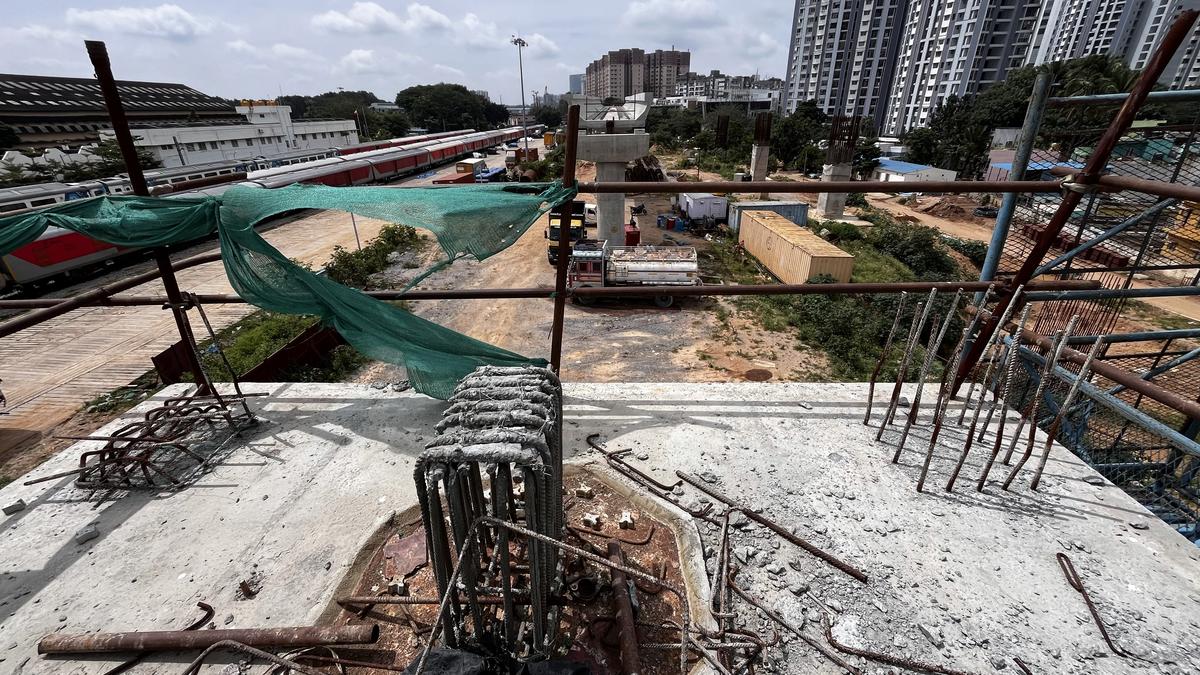
For Bengaluru, a city that has grown exponentially and faces daily gridlocks, the suburban rail could have been a lifeline decades ago.
| Photo Credit:
SUDHAKARA JAIN
K-RIDE, for its part, insists that despite setbacks, preparatory work is moving ahead. “Several station construction tenders and track laying contracts were awarded in early 2025 and groundwork has begun in select areas,” an official from K-RIDE said.
Meanwhile, the South Western Railway officials stress that land acquisition delays are largely the responsibility of KIADB and not the Railways. “Most of the railway land required is encroachment-free, and efforts are under way to clear the remaining parcels. The Railways is working closely with K-RIDE to integrate suburban rail into the ongoing redevelopment of KSR Bengaluru station, with provisions for dedicated platforms, improved passenger movement, and multimodal connectivity,” Mukul Saran Mathur, General Manager of South Western Railway(SWR) told The Hindu.
He maintained that there is no delay attributable to the Railways in terms of land handover or approvals. “K-RIDE and SWR are coordinating well and various issues are being dealt promptly. All the necessary approvals, leasing of railway land and clearance of obstacles etc., is being done by SWR expeditiously,” Mr. Mathur added.
Where the project stands today
The official figures accessed by The Hindu show that as of August 25, 2025, overall project progress stood at just 18.5 %, with an expenditure of ₹1,992.9 crore. Land acquisition was nearly complete at 97.75% by area and 86% by linear length, yet physical progress lagged behind.
But citizens point out that what has been most disheartening is the silence of political representatives. The suburban rail project has been repeatedly hailed as vital to Bengaluru’s economy, environment, and quality of life, yet MPs and MLAs have shown little inclination to push for accountability, says Mr. Dugar, while pointing out that none of the leaders have demanded answers on why Corridor One, the airport line considered the crown jewel of the project, has not seen any activity despite being accorded top priority.
The comparison with Namma Metro is unavoidable. Despite its own delays, the Metro has steadily expanded across the city, backed by political visibility . The BSRP, in contrast, has been neglected in terms of political attention. Experts suggest that part of the problem lies in its governance structure, split between State and Central agencies, which has allowed both sides to pass the buck.
Transportation expert M.N. Sreehari said, “The way forward lies in urgent corrective action. A full-time, capable MD for K-RIDE must be appointed at the earliest, and disputes with contractors must be resolved without dragging on. The government must also finalise contracts for rolling stock and accelerate integration with metro and BMTC services. Most importantly, political representatives must begin monitoring progress regularly and ensuring accountability. Without such intervention, cost escalations are inevitable, and Bengaluru risks losing out on an eco-friendly, efficient, and inclusive mode of transport.”
The Hindu had sent detailed questions regarding the project to Minister for Large and Medium Industries and Infrastructure Development M.B. Patil, but did not receive a response.
For now, as Mr. Dugar said, the trains that could have carried lakhs of commuters every day remains a dream, waiting for a breakthrough.



